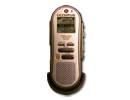'ZDNET Recommends': What exactly does it mean?
ZDNET's recommendations are based on many hours of testing, research, and comparison shopping. We gather data from the best available sources, including vendor and retailer listings as well as other relevant and independent reviews sites. And we pore over customer reviews to find out what matters to real people who already own and use the products and services we’re assessing.
When you click through from our site to a retailer and buy a product or service, we may earn affiliate commissions. This helps support our work, but does not affect what we cover or how, and it does not affect the price you pay. Neither ZDNET nor the author are compensated for these independent reviews. Indeed, we follow strict guidelines that ensure our editorial content is never influenced by advertisers.
ZDNET's editorial team writes on behalf of you, our reader. Our goal is to deliver the most accurate information and the most knowledgeable advice possible in order to help you make smarter buying decisions on tech gear and a wide array of products and services. Our editors thoroughly review and fact-check every article to ensure that our content meets the highest standards. If we have made an error or published misleading information, we will correct or clarify the article. If you see inaccuracies in our content, please report the mistake via this form.
Olympus DS-660


Olympus DS-660
pros and cons
- Very high sound quality design is dedicated to a single job
- Expensive can't double up as a storage device
Tapes are out for dictation machines these days, as manufacturers and users cross the digital divide into the world of flash-memory-based devices. Much of this has been prompted by the lowering of flash memory prices over the past few years, and now pretty much any dictation machine comes with enough memory to store the equivalent of a sack-full of tapes. Memory is so abundant now that many devices double up as disk storage, with some even adding an MP3 player for good measure.
With the DS-660, Olympus has kept strictly to the single-function philosophy. This dictation machine is a dictation machine and nothing more -- no storage, and certainly no music.
It does what it does very well, however. The 32MB of memory seems distinctly miserly compared to many (much cheaper) digital dictation machines on the market, but is enough to store over five hours of audio content. To aid recall of all this audio, files can be sorted into folders, named using an elaborate combination of presses of the fast-forward and rewind buttons, and have index marks inserted.
The device, which would be considered on the chunky side if it were a mobile phone, is -- as you would expect -- accomplished at recording audio. Microphone sensitivity can be set to dictation or conference mode, and during playback the Play button can be used to filter out noise according to three levels (off, mid or high).
Two sockets allow you to augment the built-in speaker and microphone with external devices (not supplied) to boost the quality further. A mini-USB socket allows connection to a PC, and Olympus provides some rudimentary software (Mac and Windows) for downloading, playing and emailing files from the recorder. When connected to a PC, the DS-660 also acts as a microphone and speaker for the PC, which is not only useful for voice conferencing but also means that files can be dictated directly to the PC's hard disk.
It's basic, but it does the job for which it's designed. However, at £279 (ex. VAT) this is an expensive dictation machine. You're paying for sound quality, and if that matters above all else to you then this may be worth the price. On the other hand, if you're looking for a more versatile device that can be used to store a range of files, there are plenty available, with many times more memory, for a fraction of the price.